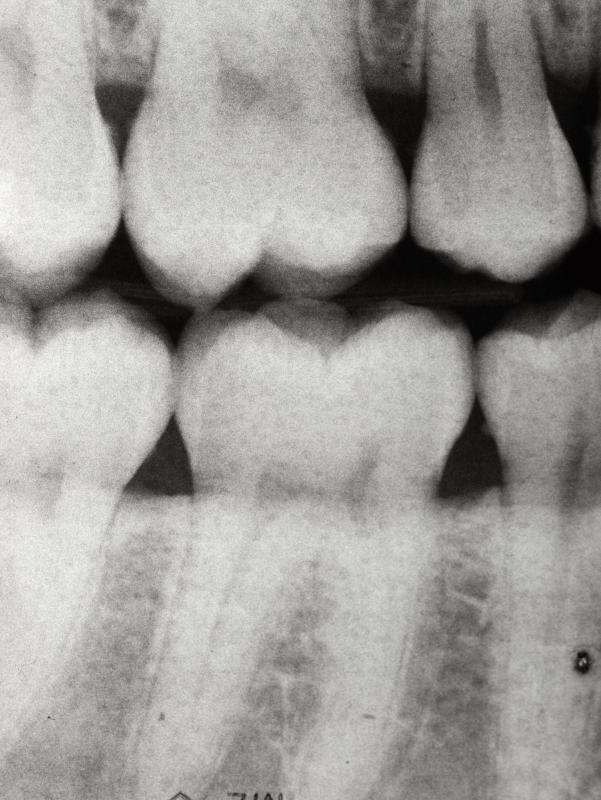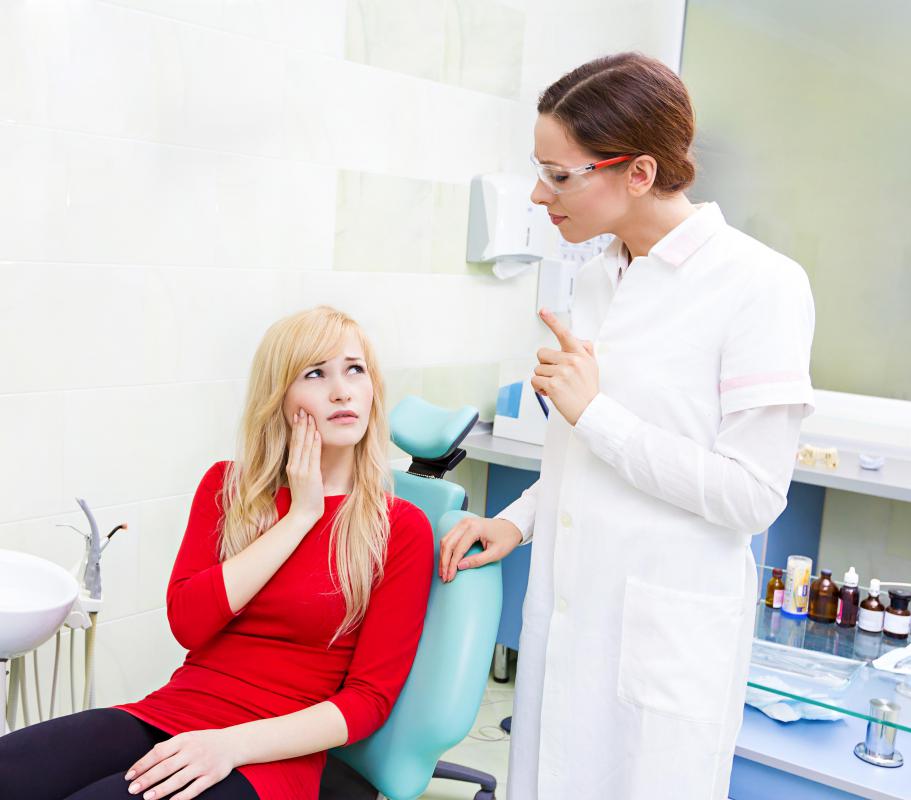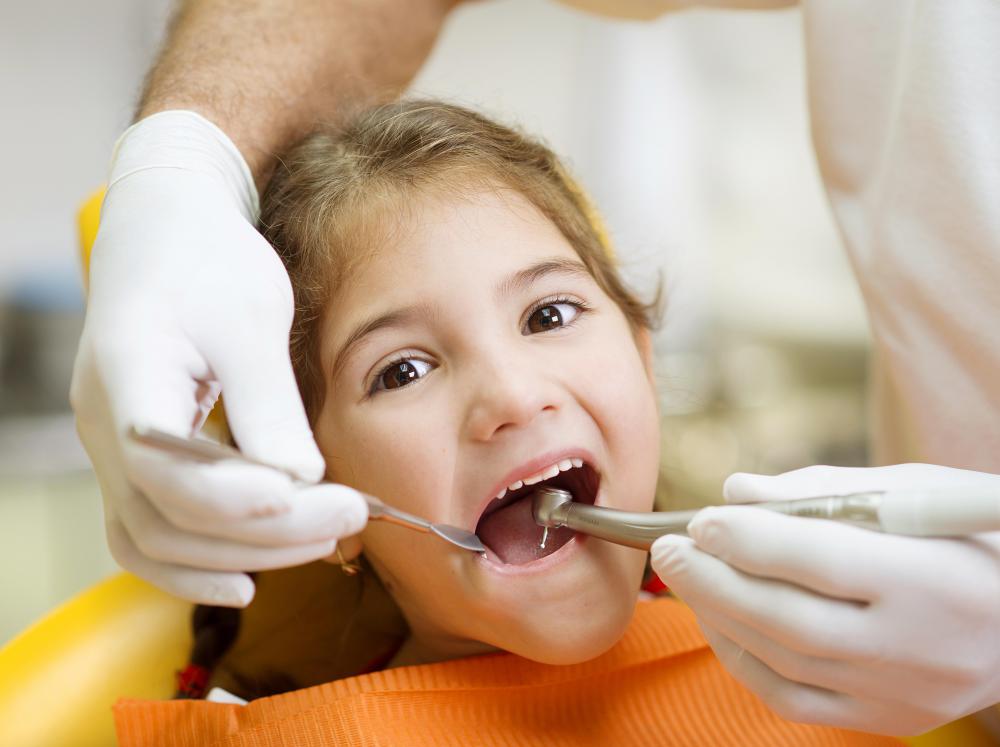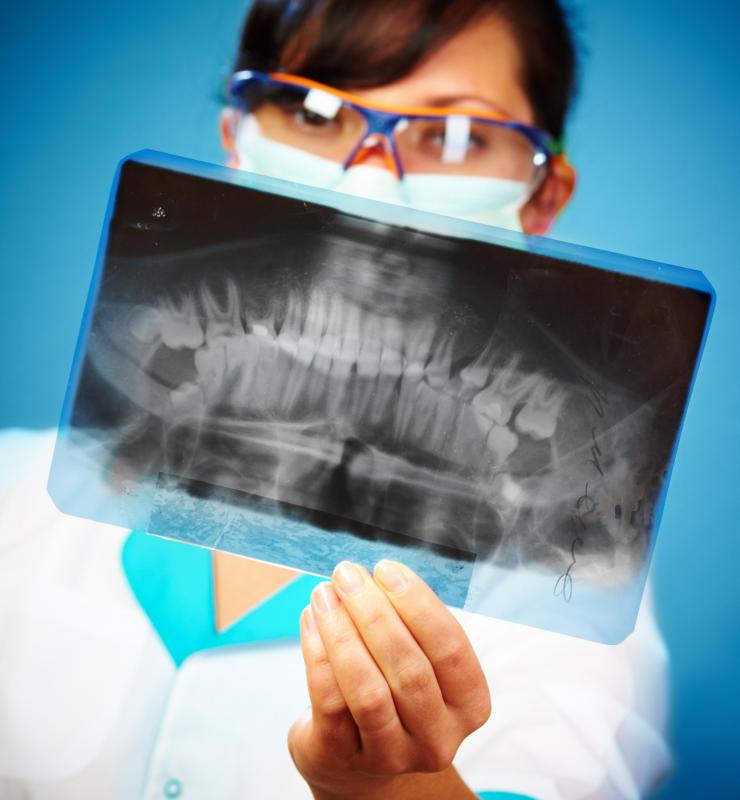At TheHealthBoard, we're committed to delivering accurate, trustworthy information. Our expert-authored content is rigorously fact-checked and sourced from credible authorities. Discover how we uphold the highest standards in providing you with reliable knowledge.
What is a Bicuspid?
The term bicuspid refers to eight of the 32 permanent teeth. There are no bicuspids in primary teeth, and they grow in to replace primary molars. Two bicuspids are on each side of the upper and lower jaw, behind the canine teeth and in front of the molars. They are also commonly known as premolars, due to their placement in the jaw. The bicuspids typically grow in at 10 to 12 years of age.
Dental notation systems describe teeth by noting their location in the mouth, either with a numerical designation or by name. The mouth can be divided into quadrants to specify location by describing upper or lower, left or right. The upper and lower designations are also referred to by the name of the jawbone, with the upper term being maxillary and the lower being mandibular. When specifying a location-based name for the bicuspids, it is common to refer to the first and second bicuspid, with the first being the tooth closer to the front of the mouth.

Cusps or cuspals are the high points on a tooth, which are used for chewing and tearing. Canine teeth, bicuspids, and molars all have cusps. Bicuspids typically have two cusps, one on the cheek or buccal side of the tooth, and one on the tongue or lingual side. Although bi is the prefix for two, a bicuspid tooth will sometimes have three cusps, with two on the lingual side.

Bicuspid teeth are described as transitional teeth, as their function is between that of the canines and the molars. Teeth have a specialized function for handling food as it is transferred from the front to the back of the mouth while chewing. The shape of the incisors and canines is ideal for cutting or tearing food, while the bicuspids are ideal for crushing and the molars for grinding. Bicuspids are shorter than the canines and smaller than the molars.

The primary molars are larger than the bicuspids that eventually replace them. Their smaller size may naturally correct overcrowding of teeth in smaller mouths. It is not unusual for one or more to be missing naturally, and they are also commonly removed to correct ongoing issues with overcrowding. They are usually the first choice if removal is necessary because they are not as prominent or visible as teeth in the front of the mouth, and their absence has less of an impact on the appearance of the smile.

Most bicuspid teeth have one root. Two is not uncommon, particularly in the upper teeth. In rare cases, the first bicuspid in the upper jaw, also known as the maxillary first bicuspid, can present with three roots. Additional roots can make extractions more complicated.
As they are permanent teeth, bicuspids should not wiggle in the mouth. A dentist should be consulted if a bicuspid appears to be loose. As with any tooth, a dentist should also be consulted if there is pain or any evidence of damage following an impact or injury.
AS FEATURED ON:
AS FEATURED ON:


















Discussion Comments
The same thing happened to me. I ended up fine and in my case I didn't even end up needing braces due to the extraction (I only had four -- a whole set removed, though, so it is probably different for your granddaughter). I now have a perfect smile.
If crowding is the cause of her problems, you might be risking cavities in very difficult to treat spots by waiting.
The only side effect I've read about (out of curiosity) is that it may reduce upper lip protrusion by a couple of millimeters, giving a "flatter" look, but if she needs that many teeth removed that may be a desired side effect in the first place. It’s 15 years later and I still have large kid cheeks and I *wish* it'd sunk in my cheekbone structure as much as random people on the Internet claim the procedure does.
When I got my teeth pulled I just kept my eyes closed and listened to music; it's more comfortable that way. She will not be seeing her own blood, even with her eyes open (unless she looks right when the tooth comes out) and with the novacaine she probably won't even taste it. The sound is more terrifying than anything else, so definitely prepare a CD player, portable radio, or MP3 player. Anything really.
Listen to the experts because this really is a case by case thing that random people on the Internet can't advise you on and get a second/third opinion if you really aren't sure.
As for anti-amalgam dentists and unnecessary root canals? Yeah, stay the heck away.
Beware of dentists who want to do root canals, especially if it is an upper tooth. Years ago, I had root canals on four teeth, three of them uppers. It turned out that my pain was from a sinus infection. And the dentist had triple-billed my insurance for work that was never necessary.
Yes, definitely get a second opinion. I had one blooduscking dentist whom calmly said, "I'd like to remove all 15 of your fillings and give you new composite ones."
Needless to say, these "services" weren't free of charge. Buyer beware.
My granddaughter just turned 10, and the Ortho wants to extract six teeth, I am concerned. She says that the adult teeth have no room to come in properly. Does this sound right? Shouldn't she be waiting until she is a bit older to give them a chance to come out naturally? My granddaughter passes out when she sees her own blood. Please let me know. Thank you.
Post your comments